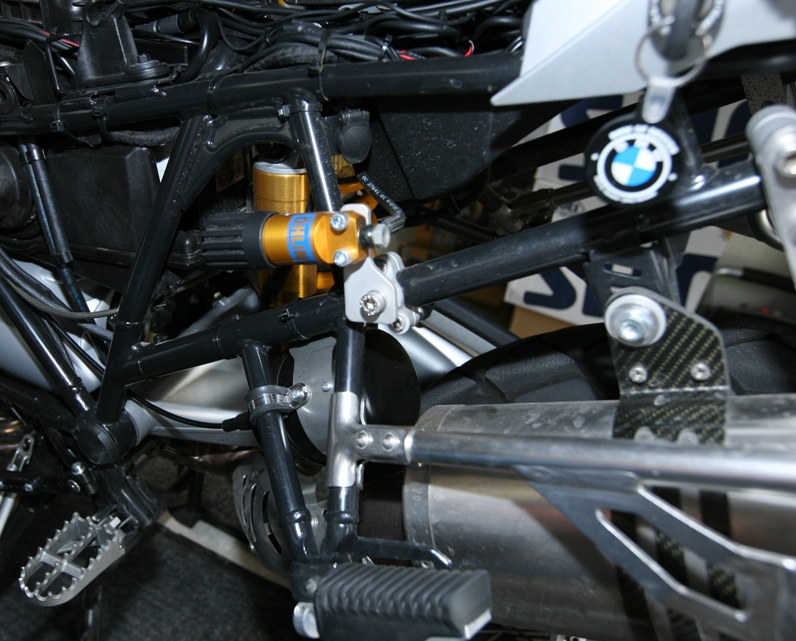First the disclaimers: I do not have any affiliation with MCCruise.com, I have used their products on many bikes over the years.
They have built many fine cruise control kits, I have personally installed them on a BMW K1200RS, Honda Valkyrie and a Yamaha FJR. Their engineering of the kits and the instructions provided for specific bikes are thorough and well sorted.
This weekend I installed their new kit for the R1200GS(and A). As I have found in the past the kit was complete and there were very few 'gotchas' in the installation. The kit was designed for a bike sold in the Australian market, which does not have a charcoal canister. The servo location as provided in the kit would interfere with the placement of the canister. I had already removed mine since the canister also interfered with the reservoir on my Ohlins rear shock. A simple modification to the supplied mounting bracket allowed to mount the servo lower and rearward from their original mounting location. I cut the supplied bracket, inverted it and mounted the servo on a lower frame tube. Though it is close to the exhaust, it doesn't get very warm at all and shouldn't pose a problem.


The control switch assy mounts to the left hand mirror mount.

Their CIU (Cable Interface Unit) replaces the stock cable splitter and allows the interface of the cruise servo to the throttle bodies.

The electronic control unit mounts under the front of the gas tank. A magnetic speed pickup is mounted to the front right caliper bolt and small magnets are put in the heads of the right-hand disc mounting screws. Electrical connections are made to accessory power, right-hand coil trigger lead, the taillight and the battery negative. A pressure switch replaces the banjo bolt at their front master cylinder for additional safety in case there is a failure in the brake light circuit. Vacuum to the servo comes from both throttle bodies.
The installation took me about 4 hours, including bleeding the front brake circuit and synchronizing the throttle bodies. While the kit should not be attempted by the mechanically challenged, I believe it is a kit which can be installed by any reasonably competent amateur mechanic.
After some simple adjustments and initial calibration I took the bike on a road test. The cruise control worked flawlessly and safely. Application of either brake disengaged the cruise control. Disengaging the clutch caused the engine speed to climb for just a moment, until the cruise control detected the condition and disengaged the cruise control. The speed sets instantly and held the speed within a couple of miles per hour from 40 to 100mph . Resume provided smooth and reasonable acceleration back to the originally set speed.
My description of the installation is fairly condensed. Tony and Frank at mccruise spend a lot of time and effort designing these installations and I don't want to share too many of the techniques they created to interface their cruise control to the bike. If you are interested in more information please contact them at sales@mccruise.com or visit their website at www.mccruise.com.
There is a short video describing the product here.